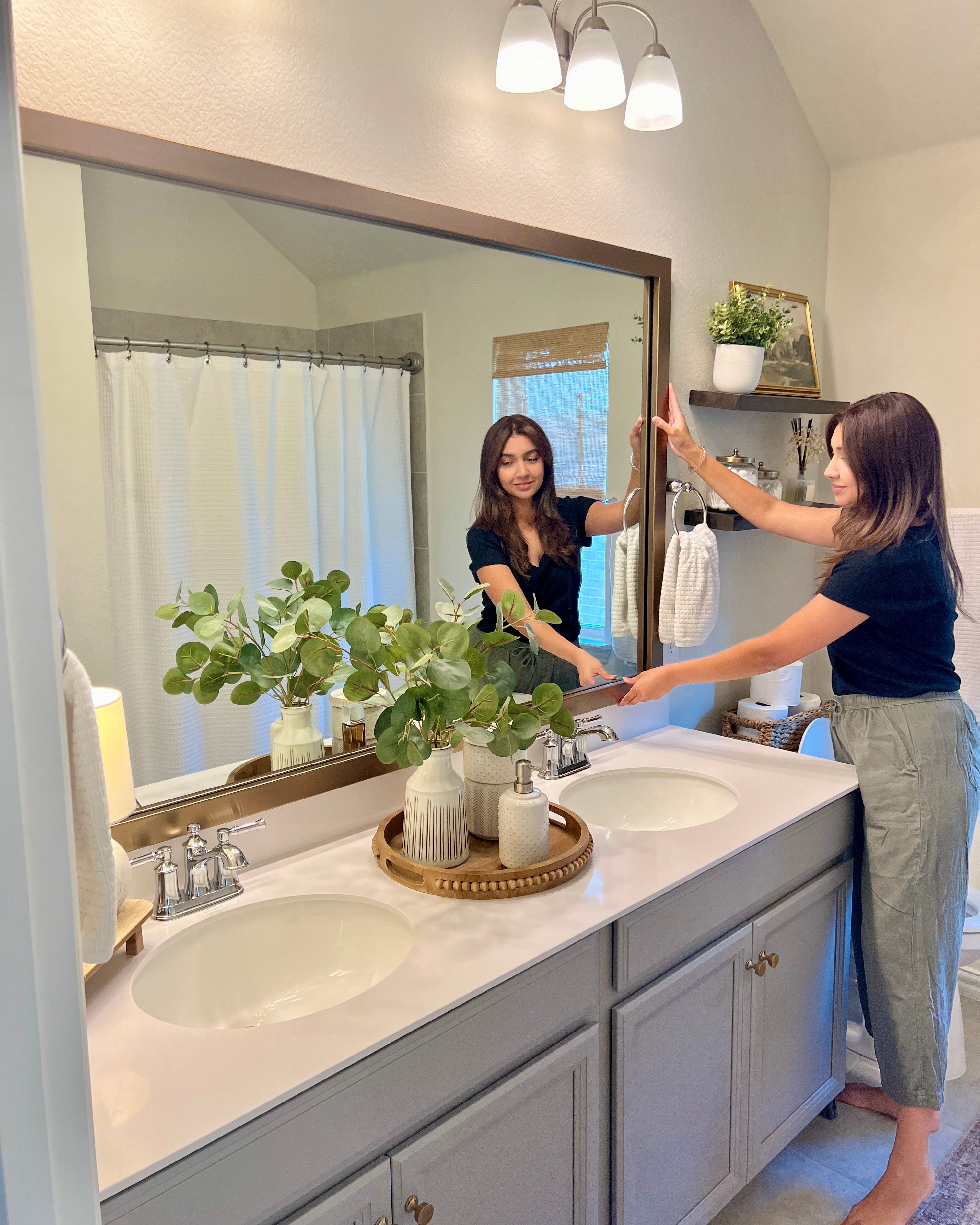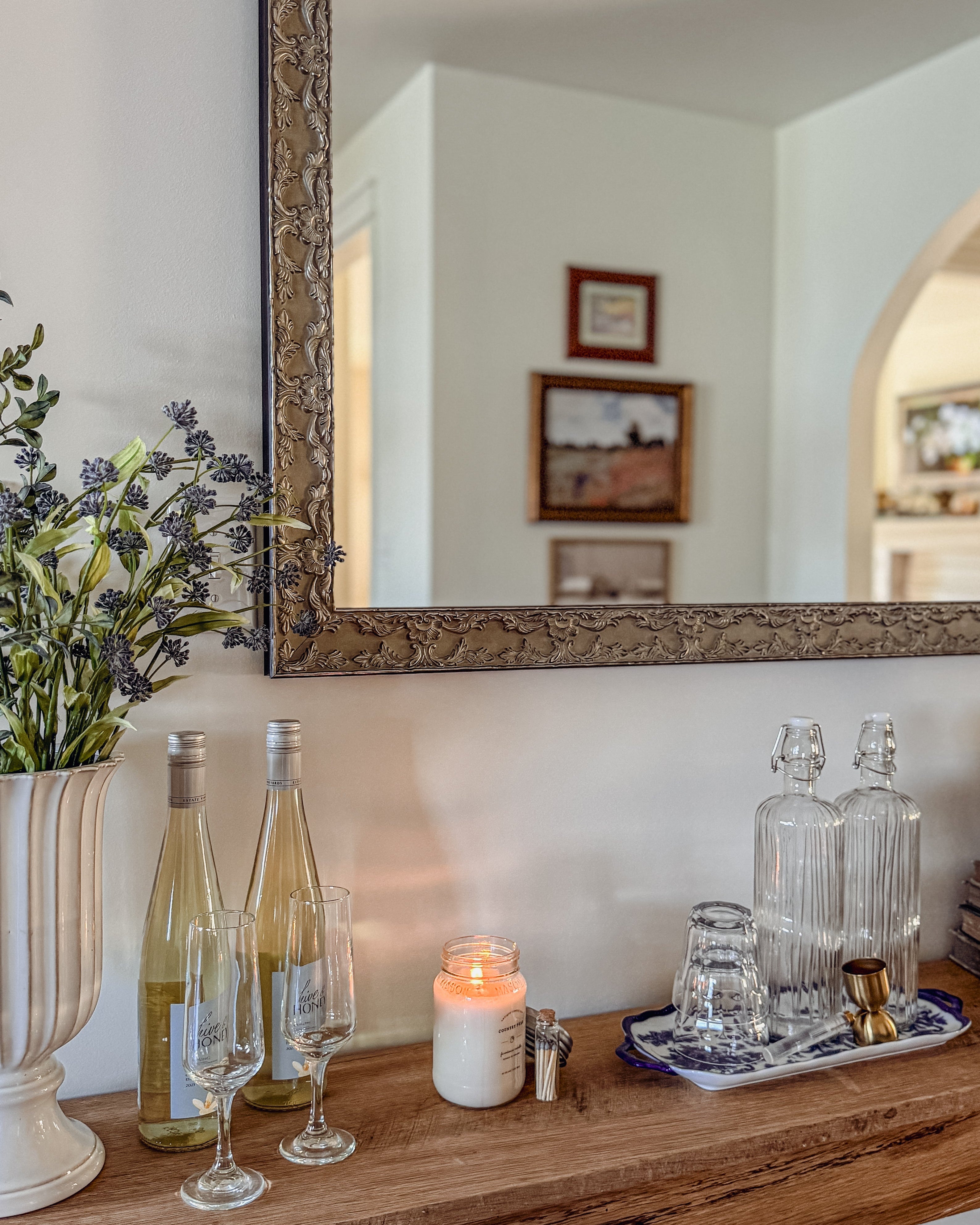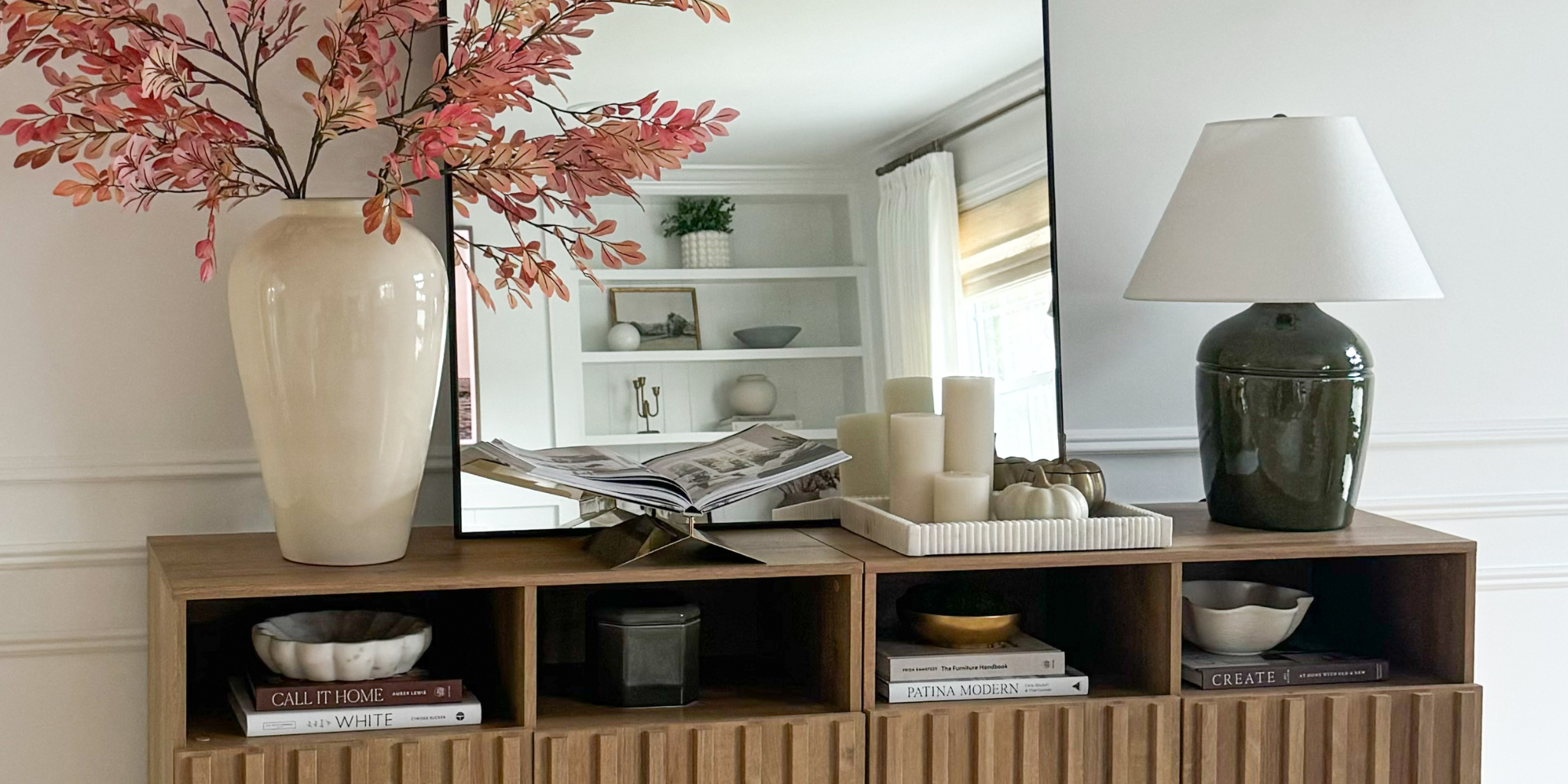Utilitarian and stylish, mirrors are a staple in any good home design. From their everyday practical use to their ability to brighten up a space and make rooms appear bigger, the right mirror selections can make a home’s decor feel intentional and beautiful.
One of the trickiest parts of choosing a mirror is understanding what size and shape is right for your space. Read on to discover our tips on mirror proportions and sizing.
Above the mantle:
Placing a mirror above the mantle is a savvy way to give your living area the appearance of more depth. It also typically reflects whatever light fixture you have in the room, thereby doubling the brightness in the space.
We recommend using the existing line of the mantle as your guide. The general rule of thumb is to choose a mirror no smaller than two-thirds the length of the mantel. Unless you are leaning a small mirror alongside other frames, a too-small mirror will look off-balance. There is a range that works, though—anything from that two-thirds size to the exact length of the fireplace (which is typically a few inches shy of where the outer edge of the mantel hits) looks well proportioned.

On an empty wall:
A single mirror that’s too small will look lost and out of place on a large wall. If you’re working with a large, empty wall, you need to go for scale. If it’s going on a large wall above a piece of furniture, aim for your mirror to be about two-thirds or equal to the size of the furniture below it. For example, say you have a large sideboard in your dining room that’s six feet long. The mirror above it should be a minimum of four feet long.
Height matters too, of course. You want to leave about a foot of reflective surface above and below your eye level.

For bathroom vanities:
The right choice for bathroom vanities is similar to an empty wall, with a few exceptions. Most professional designers will tell you that the mirror should be at least two-thirds the height of the vanity unit. For example, a vanity that is 30” tall should have a mirror that measures at least 20” high. You also need to consider the space above the mirror and leave ample room between the ceiling and the mirror.
For width, there is more wiggle room on what looks “right,” depending on the shape of the mirror. You generally want to go a few inches shorter than the width of the vanity; e.g. a 30” wide vanity pairs well with a mirror that’s 26-28” wide.

For some apartments and builder-grade homes, the bathroom mirrors are nearly flush with the top and sides of the vanity countertops. If that’s the case for you, it is still possible to achieve a balanced, stylish look. Our adhesive Add A Frame® kits work well even if your mirror is set against your countertop or backsplash. It’s a smart way to level up your bathroom design without doing any major drilling, hanging or rearranging. Simply select a frame style, enter your dimensions, and go!
Whether you opt for a ready-to-hang Decorative Mirrors, cost-effective Standard Framed Mirrors, or a fully customized creation, find a mirror that suits your specific dimensions and home style. We have you covered.



